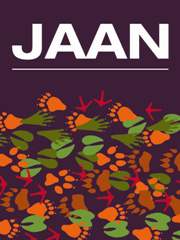Article contents
Feeding strategies for reducing nitrogen excretion in New Zealand milk production
Published online by Cambridge University Press: 22 May 2017
Summary
The concentration of crude protein in grazed New Zealand pasture is typically in excess of 200 g/kg DM, which exceeds the requirement of the dairy cow and is reflected in elevated levels of daily urinary nitrogen (N) excretion, estimated to average 262 g N/head or 751 kg N/ha. This has adverse environmental consequences, including leaching of nitrate from soil into water courses and atmospheric emissions of nitrous oxide. Problems associated with pasture as the sole feed for dairy cows include weight loss in early lactation, poor fertility and reduced lactation length. Low-protein supplements can reduce N excretion rates and increase N use efficiency. A simple feeding strategy is proposed in which pasture is supplemented with maize or whole-crop wheat silage at 5 kg DM/cow per day from the start of the pre-calving dry period on winter run-off pasture to 100 days post-calving, and from 250 days post-calving to the end of lactation. The expected response, at an assumed substitution rate of 0.7 kg decrease in pasture intake per kg silage DM, is an increase in metabolisable energy of 10 to 15 MJ/cow/day, equivalent to 33 to 48 g milk solids (MS)/kg DM of supplement. This strategy is expected to result in significantly lower urinary N excretion by the cow. Actual responses in daily milk output, from published experiments where grazing stocking rates were increased to take account of reduced herbage intake, ranged from 50 to 100 g MS/kg DM of supplement. Other benefits include early lactation bodyweight maintenance, higher percentage of cows calved which are pregnant at 150 days in milk and increased lactation period. Constraints for farmers to implement such changes include cost of silage, value of milk sold, failure to integrate forage maize or wheat in rotational cropping with pasture, and the relatively poor aerobic stability of maize and whole-crop wheat silages.
- Type
- Review
- Information
- Copyright
- Copyright © Cambridge University Press and Journal of Applied Animal Nutrition Ltd. 2017
References
- 2
- Cited by


